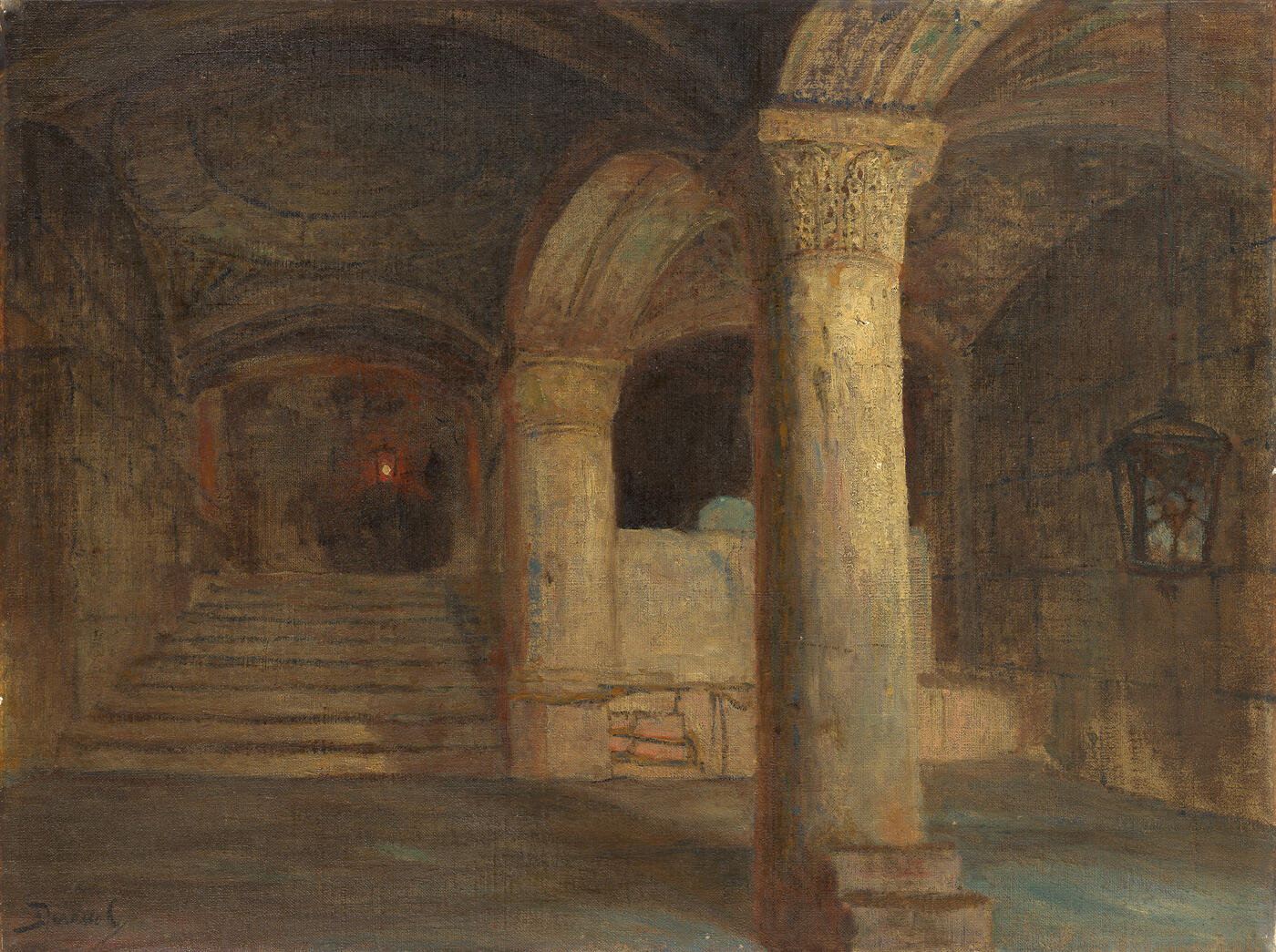6 June 2018 Russian Art Auctions
6 June 2018

10. POLENOV, VASILY (1844-1927)
The Vault under Al-Aqsa Mosque. Temple Mount, Jerusalem, signed.
Oil on canvas, 69.5 by 92 cm.
60,000-90,000 GBP
Provenance: Collection of Nicolai Ghiaurov (1929–2004), a Bulgarian opera singer, from the 1970s.
Thence by descent.
Private collection, Europe.
Authenticity of the work has been confirmed by the expert V. Petrov.
The picture now presented for auction, The Vault under Al-Aqsa Mosque. Temple Mount, Jerusalem, was painted by Vasily Polenov in 1899–1900s, following his second great journey to the Middle East, where he went in 1899 to gather material for the grandiose Gospel series From the Life of Christ. His route lay through Constantinople, Athens, Smyrna, Cairo and Port Said, and then onwards to Jerusalem and Beirut. The culminating point of the journey for the artist was his stay in the Holy Land, since his desire to go on the trip had been prompted by the need to see once again, at first hand, the location of the events recounted by the Bible, studied during his first visit to the Palestine in 1881–1882. He again returns to the Al-Aqsa Mosque, which had been called Solomon’s Temple since the time of the Crusaders.
The present composition is linked to a visit that Polenov paid to the square on the site of the destroyed Temple of Solomon. In his letters home, he enthusiastically wrote home about that square: “How many interesting and beautiful things there are; but the best of all is the square of Solomon’s Temple... I have not seen anything grander except, perhaps, for the Eski Saray Hill in Istanbul.” The interior in the composition is the underground level of the Al-Aqsa Mosque (the so-called “Solomon’s Stables”), a vaulted structure that, according to legend, survived when Solomon’s Temple had been destroyed by the Romans in the first century A.D. On a small, first version of this composition, executed in 1881, there is even an inscription in Polenov’s handwriting: “the so-called Solomon’s Basement”. It comes as no surprise then, that Polenov, who was interested in the “biblical” layer of Jerusalem’s architectural monuments, was drawn to this very ancient part of the vast mosque complex.
The view of the stately ancient vault opens up through a dim archway – a technique pioneered by Polenov in his depictions of the interiors of the Church of the Holy Sepulchre and its lower level, the Chapel of Saint Helena. The ray of sunlight that illuminates the carved capital of the arch abutment directs the gaze, towards the back of the composition, where there is a dark stairway and an enticing small spot of bright light from the hanging lamp. The space of the church is visually expanded through the sweeping curves of the arches, positioned sideways and backwards, yet its outlines are concealed in the dimness in the corners and passages. Compared to its study, which is suffused with light but is far more general and less detailed, the present composition seems to be far more complete and “picturesque”. Polenov deliberately emphasises the subterranean character of the interior and dramatises its architectural space.
This interpretation is reinforced by the fact that the Muslim quarter, in which the Temple Mount and the Al-Aqsa Mosque were located, was not so easily accessible to Christian travellers in the 19th century. Opportunities to officially visit – and subsequently to depict – the interior of the mosque came about rarely and were highly valued. This is why it is so hard to find in European and Russian painting other examples of the images of the Al-Aqsa Mosque.
The appearance at auction of such a significant work from Polenov’s celebrated series of images of the Holy Land sights is a rare, outstanding event.
Notes on symbols:
* Indicates 5% Import Duty Charge applies.
Ω Indicates 20% Import Duty Charge applies.
§ Indicates Artist's Resale Right applies.
† Indicates Standard VAT scheme applies, and the rate of 20% VAT will be charged on both hammer price and premium.